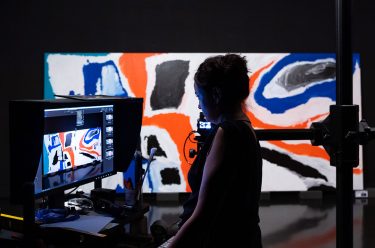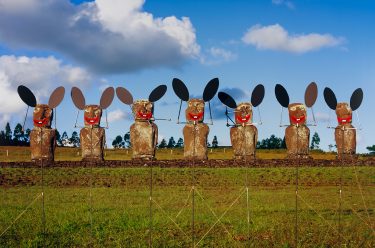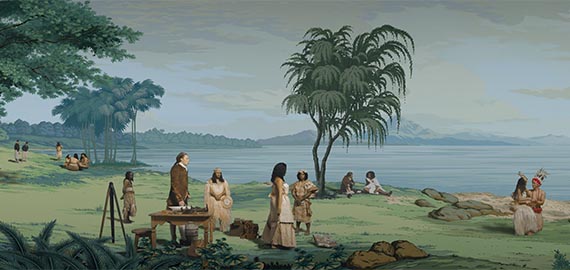
Reihana’s work is familiar to the Gallery, having featured in the ‘The 2nd Asia Pacific Triennial of Contemporary Art’ (APT2) 1996–97, ‘The 4th Asia Pacific Triennial of Contemporary Art’ (APT4) 2002-03 and Maud Page’s New Zealand collection survey ‘Unnerved’ (2010). A striking detail from her ‘Digital Marae’ series also currently flies on banners facing the Brisbane River outside the Queensland Art Gallery building. Further afield, Reihana’s work has been shown in the Sydney Biennale and in Singapore, New York, Toronto, Paris, Cambridge, Los Angeles, Taiwan and Rome.
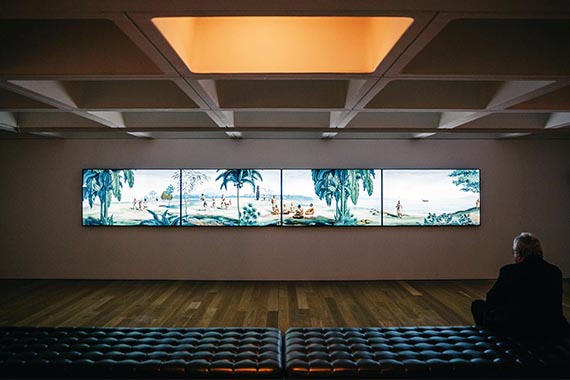
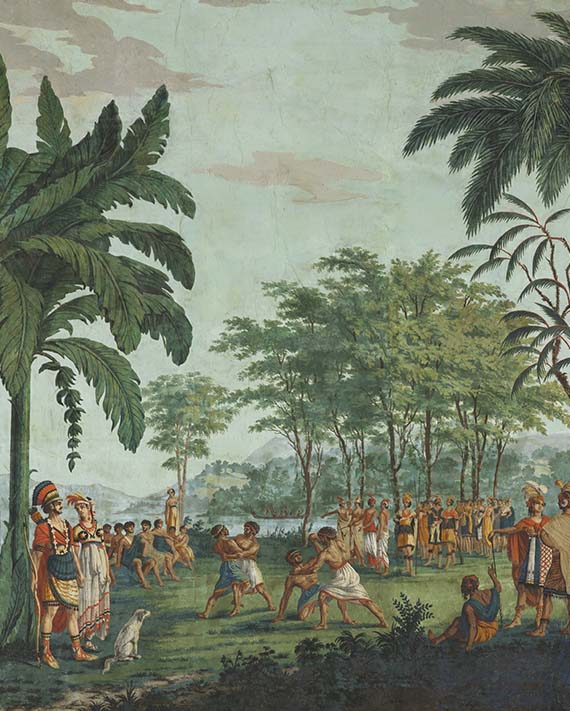
As the structure for her 32-minute video work, Reihana takes an immensely popular early nineteenth century European artefact, the expansive panoramic wallpaper Les Sauvages de la mer Pacifique (c.1804) designed by Jean-Gabriel Charvet for French entrepreneur Joseph Dufour. Dufour’s wallpaper was the largest of its time, stretching over 10 metres in length and some 2.5 metres high in twenty separate ‘drops’ or panels. Designed to completely encase a room, Les Sauvages transformed the room of a wealthy European or American estate into a Tahitian idyll, replete with Indigenous peoples in the midst of celebrations or preoccupied with the rhythms of everyday life.
Some of Charvet and Dufour’s inspirations are immediately apparent and, moreover, explicitly documented in Les Sauvages de la mer Pacifique, tableau pour decoration en papier peint, Dufour’s prospectus for the wallpaper which was published before its manufacture. Charvet extracted scenes of indigenous life and narratives of encounter from the records and journals of explorers such as James Cook and Louis-Antoine de Bougainville, situating clusters of detailed figures within a vivid and lush landscape of exotic flora and fauna. The wallpaper’s figures, set in familiar Hellenic poses and outfitted in Grecian drapery, followed a widely-favoured neoclassical style that echoed Roman murals then being unearthed in Pompeii and Herculaneum. Popular Enlightenment thought espoused by Jean-Jacques Rousseau and other writers of the time situated the indigenous communities in Les Sauvages within the utopian environment of the dusky maiden and noble savagery.
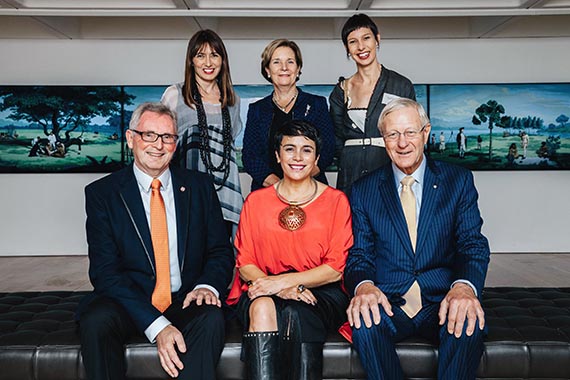
In a conversation with QAGOMA Director Chris Saines CNZM and Maud Page, Deputy Director, Collection and Exhibitions, Lisa Reihana recalls being shocked on first seeing the wallpaper on display at the National Gallery of Australia: ‘I couldn’t see anything that I recognised.’ Inspired to bring the wallpaper ‘to life’ and invest Les Sauvages with more complex understandings of indigenous culture at the moment of their encounter with an outside world, Reihana launched a monumental six-year project of painstaking research, planning and technical design.
The result, in Pursuit of Venus [infected], recodes Dufour and Charvet’s wallpaper, reclaiming the identities of both its ‘noble savages’ and European colonists through the use of digital technologies within a carefully rendered landscape that recreates Charvet’s original bright aesthetic. Over 65 vignettes incorporate performances of dance, ceremony and history from across the Pacific through a contemporary lens. Reihana casts graduates from Pacific Institute Performing Arts (PIPA), Auckland, and from across Pacific communities. Careful, collaborative attention to clothing, tattoos, choreography and scripting asserts each character in her work with undeniable liveliness. Reihana reflects:
As a filmmaker, the value that you bring to the work is just to re-enact it, and to show it again, so that we can decide how we think about these things. That’s what I want to bring to the audience. You become the witness. You become the person on the land looking out and seeing these things happen. … Imagine what people felt.
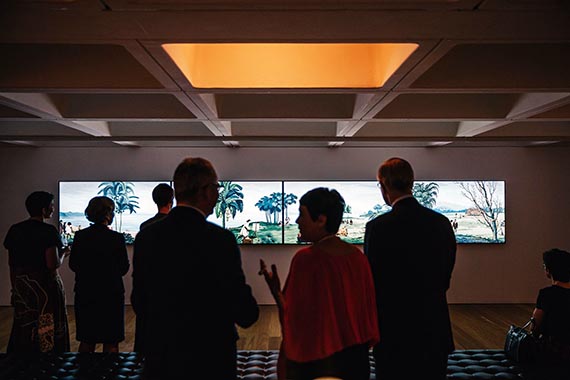
in Pursuit of Venus [infected] had its Australian premiere at the Queensland Art Gallery on 9 May, where it was revealed as the subject of the 2015 QAGOMA Foundation Appeal. Director Chris Saines, introducing Lisa Reihana as the evening’s special guest, situated the work in its contemporary context:
For me, it is already among the most art historically and culturally well-informed multimedia works that I have encountered. I have no doubt that it will stand among the most visually and conceptually sophisticated works of its time.
The launch of the 2015 Appeal saw Foundation members, donors and guests captivated as Reihana’s work panned beautifully across the screens. To close the fascinating in-conversation session Reihana invited everyone to join in a stanza of the traditional Scottish ode to departures and returns, ‘My bonnie lies over the ocean’, a song which resonated hauntingly with the remarkable, immersive experience of in Pursuit of Venus [infected] at the Gallery.
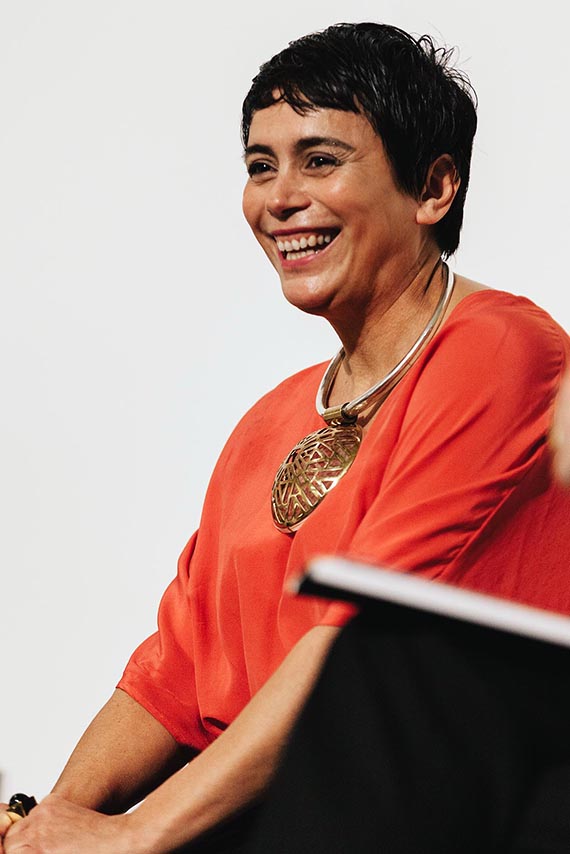
To support the 2015 QAGOMA Foundation Appeal or for more information, visit the Appeal webpage. Contributions of all sizes are welcome and those over $2 are tax deductible. Contributions of $4000 or more qualify donors for Foundation membership and support from existing Foundation members will be credited to their memberships.
For further news and information about the 2015 Appeal, including footage of Lisa Reihana’s exclusive in-conversation session during the Appeal launch, stay tuned to the blog.
